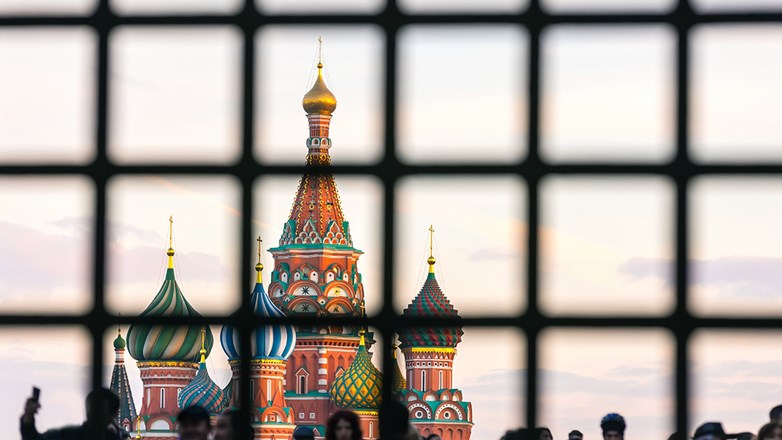Sanctions on Russia: Getting the facts right
The important strategic role that sanctions play in the efforts to constrain Russia’s geopolitical ambitions and end its brutal war on Ukraine is often questioned and diminished in the public debate. This policy brief, authored by a collective of experts from various countries, shares insights on the complexities surrounding the use of sanctions against Russia, in light of its illegal aggression towards Ukraine. The aim is to facilitate a public discussion based on facts and reduce the risk that the debate falls prey to the information war.
Sanctions are a pivotal component in the array of strategies deployed to address the threat posed by Russia to the rule-based international order. Contrary to views minimizing their impact, evidence and research suggest that sanctions, particularly those targeting Russian energy exports, have significantly affected Russia’s macroeconomic stability [1,2,3]. Between 2022 and 2023, merchandise exports fell by 28 percent, the trade surplus decreased by 62 percent, and the current account surplus dropped by 79 percent (see the Bank of Russia’s external sector statistics here). Although 2022 represents an extraordinarily high baseline due to the delayed impacts from energy sanctions, the $190 billion decrease in foreign currency inflows during this time has already made a significant difference for Russia. This amount is equivalent to about two years of Russia’s current military spending, or around 10 percent of Russia’s yearly GDP, depending on the figures. Our estimates suggest that Russia’s losses due to the oil price cap and import embargo alone amount to several percent of its GDP [3,4]. These losses have contributed to the ruble’s continued weakness and have forced Russian authorities to sharply increase interest rates, which will have painful ripple effects throughout the economy in the coming months and years. Furthermore, the international sanctions coalition’s freezing of about $300 billion of the Bank of Russia’s reserves has significantly curtailed the central bank’s ability to manage the Russian economy in this era of war and sanctions.
Sanctions enforcement
Addressing the enforcement of sanctions, it is crucial to acknowledge the extensive and continuous work undertaken by governments, think tanks, and the private sector to identify and close loopholes that facilitate sanctions evasion. Suggesting that such efforts are futile, often with arguments that lack solid evidence, potentially undermines these contributions, and furthermore provides (perhaps unintended) support to those advocating for a dismantling of the sanctions regime. We do not deny that several key aspects are facing challenges, from the oil price cap to export controls on military and dual-use goods. However, the path forward is to step up efforts and strengthen the implementation and enforcement – not to abandon the strategy altogether. Yes, Russia’s shadow fleet threatens the fundamental mechanism of the oil sanctions and, namely its reliance on Western services [4,5,6]. However, recent actions by the U.S. Treasury Department have shown that the sanctioning coalition can in fact weaken Russia’s ability to work around the energy sanctions. Specifically, the approach to designate (i.e., sanction) individual tankers has effectively removed them from the Russian oil trade. More vessels could be targeted in a similar way to gradually step-up the pressure on Russia [7]. While Russia continues to have access to many products identified as critical for the military industry (for instance semiconductors) [8], it has been shown that Russia pays significant mark-ups for these goods to compensate for the many layers of intermediaries involved in circumvention schemes. Sanctions, even when imperfect, thus still work as trade barriers. In addition to existing efforts and undertakings, companies which help Russia evade export controls can be sanctioned, even when registered in countries outside of the sanctioning coalition. Furthermore, compliance efforts within, and against, western companies, who remain extremely important for Russia, can be stepped up.
The Russian economy
Many recent newspaper articles have been centered around the theme of Russia’s surprisingly resilient economy. We find these articles to generally be superficial and missing a key point: Russia is transitioning to a war economy, driven by massive and unsustainable public spending. In 2024, military spending is projected to boost Russia’s GDP growth by at least 2.5 percentage points, driven by a planned $100 billion in defense expenditures [9]. However, seeing this for what it is, namely war-spending, raises significant concerns about the sustainability of this growth, as it eats into existing reserves and crowds out investments in areas with a larger long-term growth potential. The massive spending also feeds inflation in consumer prices and wages, in particular as private investment levels are low and the labor market is short on competent labor. This puts pressure on monetary policy causing the central bank to increase interest rates even further, to compensate for the overly stimulating fiscal policy.
Further, it is important to bear in mind that, beyond this stimulus, the Russian economy is characterised by fundamental weaknesses. Russia has for many years dealt with anaemic growth due to low productivity gains and unfavourable demographics. Since the first round of sanctions was imposed on Russia, following its illegal annexation of Crimea in 2014, growth has hovered at around 1 percent per year on average – abysmal for an emerging market with catch-up potential. More recently, current sanctions and war expenditures have made Russia dramatically underperform compared to other oil-exporting countries [10]. Moreover, none of the normal (non-war related) growth fundamentals is likely to improve. Rather, the military aggression and the ensuing sanctions have made things worse. Hundreds of thousands of Russians have been killed or wounded in the war; many more have left the country to either escape the Putin regime or mobilization. Those leaving are often the younger and better educated, worsening the already dire demographic situation, and reinforcing the labor market inefficiencies. Additionally, with the country largely cut off from the world’s most important financial markets, investments in the Russian economy are completely insufficient [11].
As a result, Russia will be increasingly dependent on fossil fuel extraction and exports, a strategy that holds limited promise as considerations related to climate change continue to gain importance. With the loss of the European market, either due to sanctions or Putin’s failed attempt to weaponize gas flows to Europe, Russia finds itself dependent on a limited number of buyers for its oil and gas. Such dependency compels Russia to accept painful discounts and increases its exposure to market risks and price fluctuations [12].
The cost of sanctions
Sanctions have not been without costs for the countries imposing them. Nonetheless, the sanctioning countries are in a much better position than Russia. Any sanction strategy is necessarily a tradeoff between maximizing the sanctioned country’s economic loss while minimizing the loss to the sanctioning countries [9], but there are at least two qualifications to bear in mind. The first is that some sanctions imply very low losses – if any – while others may carry limited short term losses but longer term gains. This includes the oil-price cap that allows many importing countries to buy Russian oil at a discount [3], and policies to reduce energy demand, which squeezes Russia’s oil-income [13]. These policies may also initially hurt sanctioning countries, but in the long term facilitate an investment in energy self-sufficiency. Similarly, trade sanctions also imply some protection of one’s own industry, meaning that such sanctions may in fact bring benefits to the sanctioning countries – at least in the short run. The second qualification is that, in cases where sanctions do imply a cost to the sanctioning countries, the question is what cost is reasonable. Russia’s economy is many times smaller than, for instance, the EU’s economy. This gives the EU a strategic advantage akin to that in Texas hold’em poker: going dollar for dollar and euro for euro, Russia is bound to go bankrupt. Currently, Russia allocates a significantly larger portion of its GDP to its war machine than most sanctioning countries spend on their defense. That alone suggests sanctioning countries may want to go beyond dollar for dollar as it is cheaper to stop Russia economically today than on a future battlefield. This points to the bigger question: what would be the future cost of not sanctioning Russia today? Many accredit the weak response from the West to the annexation of Crimea in 2014 as part of the explanation behind Putin’s decision to pursue the current full-scale invasion of Ukraine. Similarly, an unwillingness to bear limited costs today may entail much more substantial costs tomorrow.
When discussing the cost of sanctions, one must also take into account Russia’s counter moves and whether they are credible [14]. Often, they are not [3, 15]. Fear-inducing platitudes, such that China and Russia will reshape the global financial system to insulate themselves from the West’s economic statecraft tools, circulate broadly. We do not deny that these countries are undertaking measures in this direction, but it is much harder to do so in practice than in political speeches. For instance, moving away from the U.S. dollar (and the Euro) in international trade (aside from in bilateral trade relations that are roughly balanced) is highly challenging. In such a trade, conducted without the U.S. dollar, one side of the bargain will end up with a large amount of currency that it does not need and cannot exchange, at scale, for hard currency. As long as a transaction is conducted in U.S. dollar, the U.S. financial system is involved via corresponding accounts, and the threat of secondary sanctions remains powerful. We have seen examples of this in recent months, following President Biden’s executive order on December 22, 2023.
One of many tools
Finally, we and other proponents of sanctions do not view them as a panacea, or an alternative to the essential military and financial support that Ukraine requires. Rather, we maintain that sanctions are a critical component of a multi-pronged strategy aimed at halting Putin’s unlawful and aggressive war against Ukraine, a war that threatens not only Ukraine, but peace, liberty, and prosperity across Europe. The necessity for sanctions becomes clear when considering the alternative: a Russian regime with access to $300 billion in the central bank’s reserves, the ability to earn billions more from fossil fuel exports, and to freely acquire advanced Western technology for its military operations against Ukrainian civilians. In fact, the less successful the economic statecraft measures are, the greater the need for military and financial aid to Ukraine becomes, alongside broader indirect costs such as increased defense spending, higher interest rates, and inflation in sanctioning countries. A case in point is the West’s provision of vital – yet expensive – air defense systems to Ukraine, required to counteract Russian missiles and drones, which in turn are enabled by access to Western technology. Abandoning sanctions would only exacerbate this type of challenges.
Conclusion
The discourse on sanctions against Russia necessitates a nuanced understanding of their role within the context of the broader strategy against Russia. It is critical to understand that shallow statements and misinformed opinions become part of the information war, and that the effectiveness of sanctions also depends on all stakeholders’ perceptions about the sanctioning regime’s effectiveness and long run sustainability. Supporting Ukraine in its struggle against the Russian aggression is not a matter of choosing between material support and sanctions; rather, Ukraine’s allies must employ all available tools to ensure Ukraine’s victory. While sanctions alone are not a cure-all, they are indispensable in the concerted effort to support Ukraine and restore peace and stability in the region. The way forward is thus to make the sanctions even more effective and to strengthen the enforcement, not to abandon them.
References
Disclaimer: Opinions expressed in events, policy briefs, working papers and other publications are those of the authors and/or speakers; they do not necessarily reflect those of SITE, the FREE Network and its research institutes.
Photo: Valery Bocman, Shutterstock




